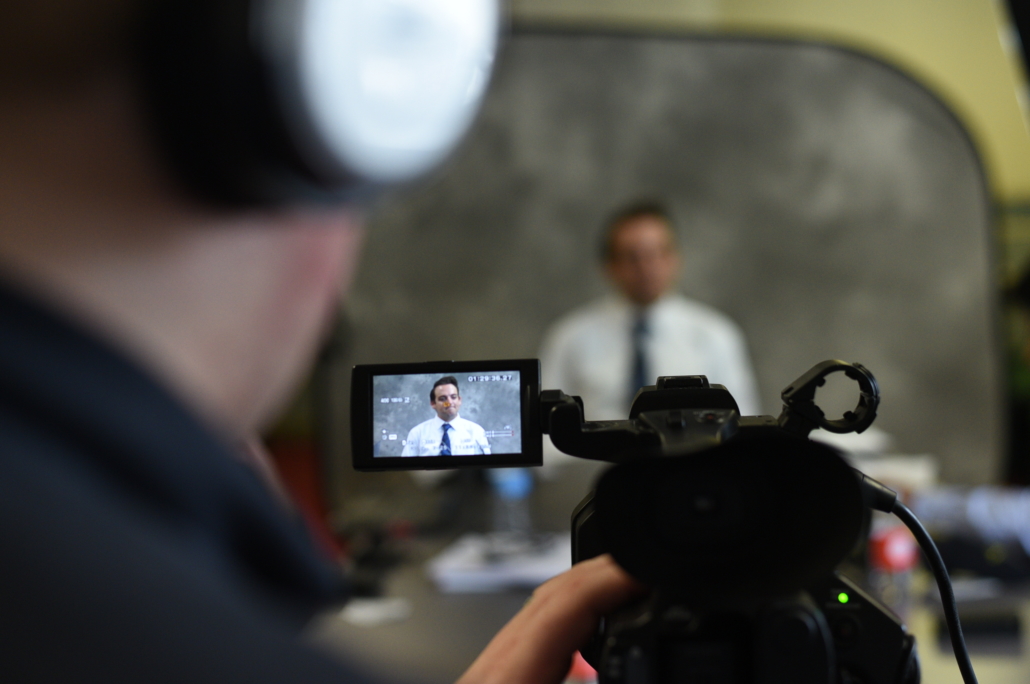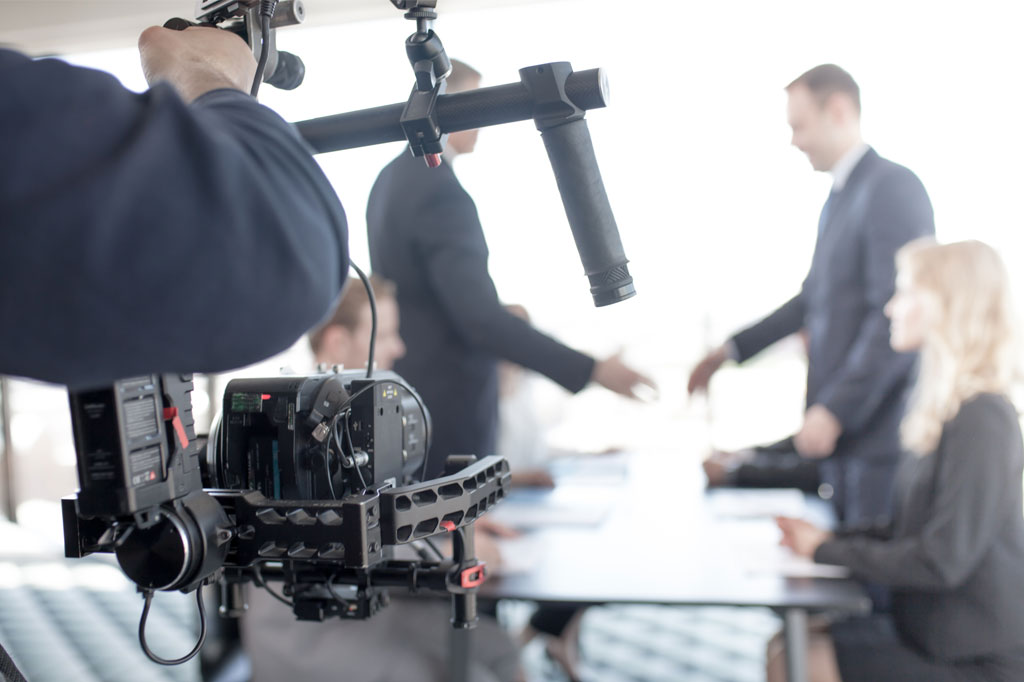The Ultimate Guide to Legal Videography for Lawyer and Legal Teams
Wiki Article
Looking Into the Systems of Lawful Videography: Introduction Its Procedure in Safeguarding Authentic Visual Testament for Judicial Procedures
In the world of judicial process, the duty of legal videography stands as a foundation in protecting and providing aesthetic proof. As modern technology remains to advance, the devices behind legal videography have actually ended up being progressively complex, using a critical layer of credibility to testimonies recorded on video clip. By diving into the operational intricacies of legal videography, one can reveal the thorough procedures that protect the integrity of visual proof provided in courts - Legal Videography. This exploration not just clarifies the historical advancement of lawful videography however additionally hints at the future patterns that may further revolutionize exactly how visual testimonies are maintained in the world of justice.Historical Evolution of Lawful Videography
Taking a look at the historical progression of legal videography reveals a substantial change in the capturing and presentation of visual evidence within the lawful landscape. In the past, legal process greatly counted on written photographs and records to document events and offer evidence. However, with the introduction of video modern technology, the lawful market experienced a paradigm change in exactly how visual testament was recorded and offered.The evolution of lawful videography can be mapped back to the late 20th century when developments in video recording tools made it much more available for usage in court rooms. This technological development not only enhanced the precision and reliability of visual proof yet additionally changed the method instances were offered to courts and courts (Legal Videography). Lawyers began to recognize the convincing power of video clip recordings in communicating emotions, nuances, and non-verbal hints that written pictures or transcripts alone could not record successfully

Technology Innovations in Video Documentation
What essential technical improvements have revolutionized video clip documentation in the legal field? The legal field has seen substantial innovations in video clip documentation modern technology that have improved the credibility and dependability of aesthetic evidence in judicial process. One of the vital advancements is high-definition (HD) video recording abilities, which supply crystal-clear photos and sharp information that are critical for precisely recording testaments, facial expressions, and various other aesthetic cues. In addition, the assimilation of timestamping and metadata features in video clip paperwork devices has actually made it possible for exact paperwork of when and where the video clip was taped, making certain the stability of the evidence provided in court.Additionally, developments in video encryption and watermarking technologies have actually strengthened the safety and security and tamper-proof nature of video clip evidence, guarding it against unapproved modifications or tampering. Furthermore, the introduction of cloud storage options and remote gain access to capabilities has structured the storage, access, and sharing of video clip evidence, promoting smooth collaboration among attorneys and making sure reliable accessibility to vital aesthetic testimonies when required. These technological improvements in video clip documentation have actually unquestionably reinvented the lawful area, boosting the precision, credibility, and admissibility of visual proof in judicial proceedings.
Function of Lawful Videographers in Court Room Settings
The advancement of video paperwork modern technology in the legal area has actually required a crucial function for lawful videographers in court room settings, making sure the honesty and integrity of visual statements provided throughout judicial proceedings. Legal videographers play an essential function in capturing and preserving precise aesthetic evidence that can be pivotal in lawsuit. Their duty reaches setting up equipment, taping process, and generating top quality video clips that properly reflect the check these guys out occasions in the court.
In addition, legal videographers commonly function very closely with lawful groups to make sure that the video proof straightens with the case's demands and can be successfully provided in court to sustain the lawful disagreements being made. Generally, the duty of legal videographers in court setups is essential in upholding the concepts of justice and making sure the transparency of lawful process. Legal Videography.

Ensuring Admissibility and Integrity of Video Evidence
To maintain the reputation of aesthetic proof provided in legal procedures, making certain the admissibility and honesty of video evidence is a vital obligation for lawful videographers. Admissibility refers to the acceptance of evidence by the court, and for video clip evidence to be admissible, it must fulfill certain standards. Lawful videographers play a crucial duty in guaranteeing that the video clips they capture adhere to the guidelines of evidence, such as link authenticity, integrity, and importance.Stability of video clip evidence includes preserving the originality and precision of the video from the time it is tape-recorded until it exists in court. This consists of firmly keeping the video clip documents, recording the chain of custodianship, and protecting against any tampering or modifications. Lawful videographers have to comply with stringent procedures to assure the honesty of the video proof and prevent any difficulties to its authenticity.
Future Trends in Legal Videography
Provided the boosting reliance on innovation in lawful proceedings, lawful videographers are poised to accept ingenious improvements shaping the future of visual testimony capture and presentation. Among the prominent patterns on the horizon is the combination of online fact (VIRTUAL REALITY) and increased truth (AR) technologies right into lawful videography. These modern technologies have the prospective to reinvent exactly how aesthetic evidence exists in courtrooms, allowing juries and judges to submerse themselves in the scene of the crime or event.In addition, making use of expert system (AI) formulas for video evaluation is expected to improve the procedure of evaluating and evaluating huge quantities of video clip footage. AI can assist in determining key minutes, abnormalities, and patterns within videos, enhancing the effectiveness of lawful examinations.

Conclusion
try these out To conclude, legal videography has actually played an essential function in providing authentic aesthetic evidence for judicial process. Through technical developments and the expertise of legal videographers, the integrity and admissibility of video clip proof are ensured in courtroom setups. As lawful videography remains to advance, it will certainly be vital to support requirements that keep the accuracy and dependability of visual testimony for the future of legal process.Analyzing the historic development of lawful videography reveals a substantial improvement in the recording and presentation of aesthetic proof within the lawful landscape.The advancement of video clip documentation technology in the legal field has demanded an important duty for legal videographers in court settings, making sure the honesty and reliability of aesthetic testimonies offered throughout judicial proceedings. In addition, lawful videographers often work very closely with lawful teams to make sure that the video evidence aligns with the case's needs and can be properly offered in court to support the lawful arguments being made.To preserve the trustworthiness of visual proof provided in legal proceedings, guaranteeing the admissibility and integrity of video clip evidence is an important duty for legal videographers. As legal videography continues to progress, it will be crucial to support criteria that preserve the precision and reliability of visual testament for the future of legal procedures.
Report this wiki page